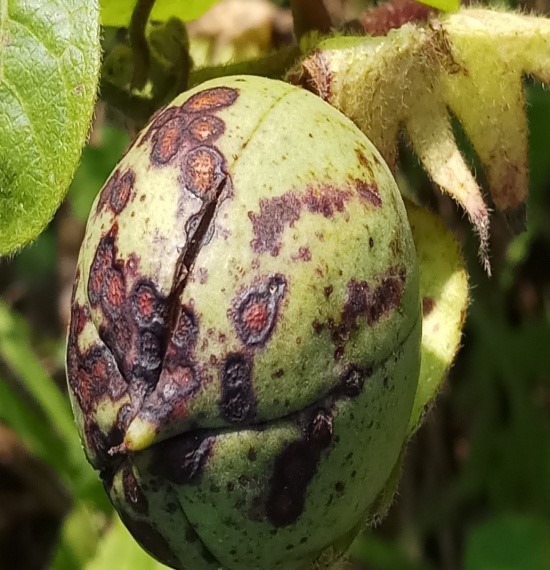Symptom
- The fungus infects the seedlings and produces small reddish circular spots on the cotyledons and primary leaves.
- The lesions develop on the collar region, stem may be girdled, causing seedling to wilt and die.
- In mature plants, the fungus attacks the stem, leading to stem splitting and shredding of bark.
- The most common symptom is boll spotting with small water soaked, circular, reddish brown depressed spots on the bolls.
- The lint is stained to yellow or brown, becomes a solid brittle mass of fibre.
Survival and Mode of Spread
- The pathogen survives as dormant mycelium in the seed or as conidia on the surface of seed .
- It also perpetuates on the rotten bolls and other plant debris in the soil.
- Primary spread is through infested seed and soil.
- Secondary spread is through air-borne conidia.
Favourable Conditions
- Prolonged rainfall at the time of boll formation and close planting.
Management
- Remove and burn the infected plant debris and bolls in the soil.
- Rogue out the reservoir weed hosts.
- Treat the acid-delinted seeds with Chlorothalonil at 4 g/kg of seed .
- Spray Copper oxychloride @ 500 g / acre, at boll formation stage
Source of information
|
 |
Reddish brown depressed spots |
|

